Particulate History
Particulate History, 2022, Double accordion structure with handmade paper magnetic enclosure. Typewritten text, monotype and relief prints on Thai Kozo with gesso, thread and collage. Closed dimensions: 12” wide by 6” tall x .25” deep. Open dimensions: 24” wide by 6” tall x 4” deep. Edition of 20. Collected by Evergreen State College, University of Connecticut, University of Richmond, Pennsylvania State University, Iowa State University, George Washington University, Northeastern University
Particulate History, a double accordion featuring polar imagery & visual poetry, was inspired by the scientific method of harvesting historical climate data from the earth’s glaciers by drilling and extracting long frozen cylinders called ice cores. Air pollution, volcanic glass shards, greenhouse gases and industrial chemicals circulate across the planet and become trapped within air bubbles in the ice, preserving samples of the earth’s atmosphere over hundreds and thousands of years. Scientists can travel back in time by studying these layers of frozen time, allowing them to measure and date volcanic eruptions, rising CO2 emissions, temperature fluctuations and even fallout from thermonuclear bombs. I learned about ice cores when researching for my first trip to Antarctica and quickly became fascinated by their physical embodiment of time and knowledge. As I crunched my boots across deep snowfall, I couldn’t help thinking about the history below my feet.

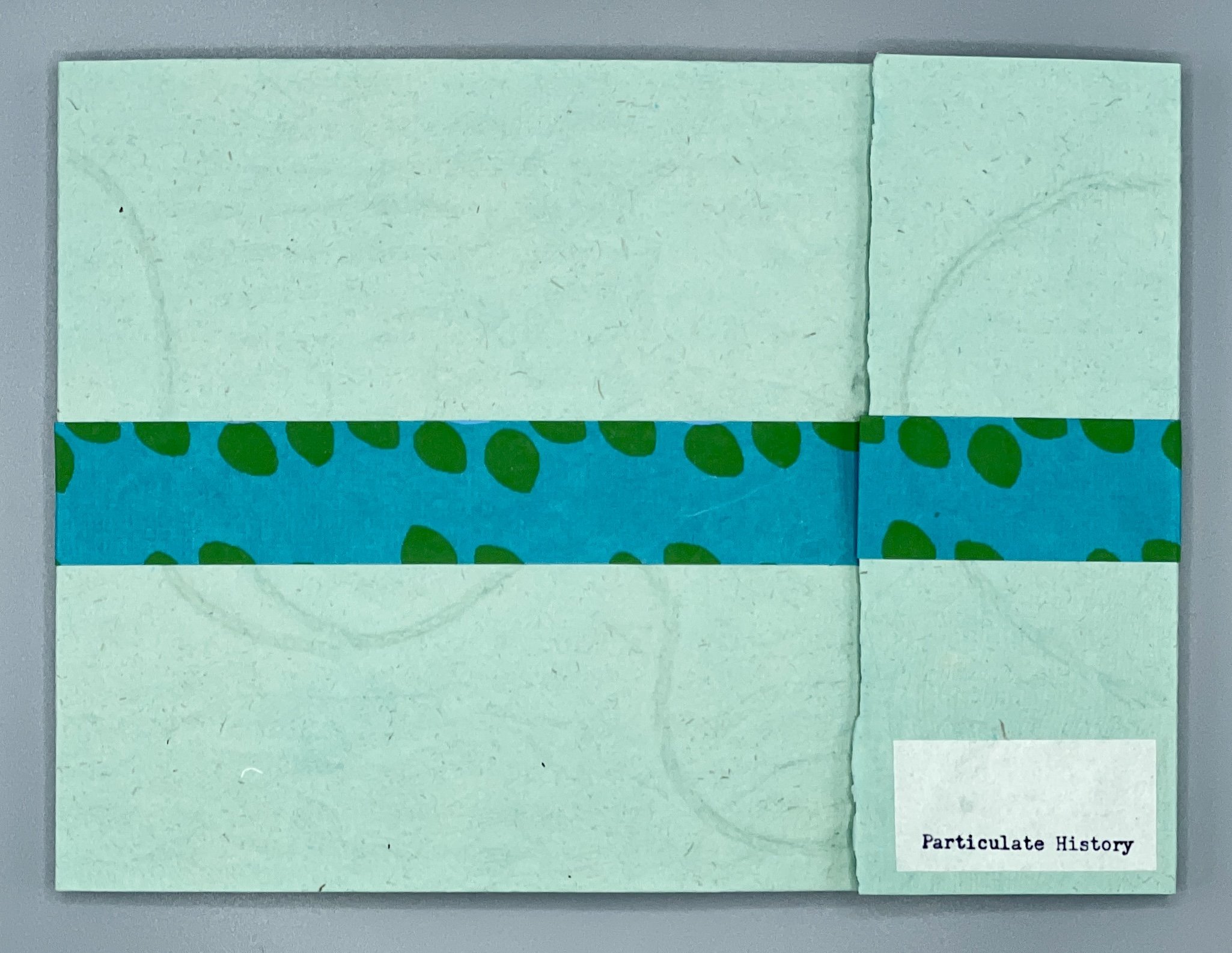
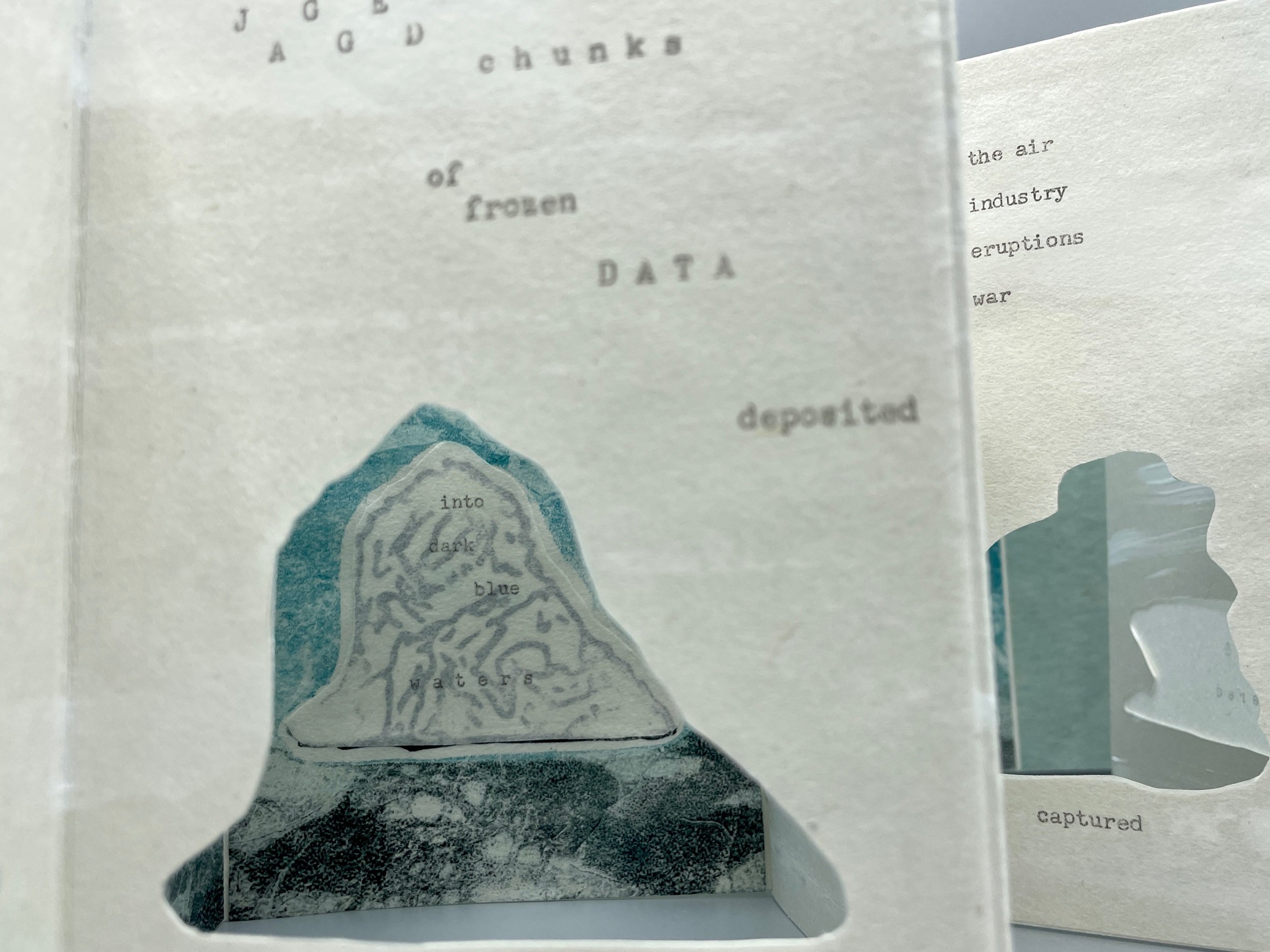
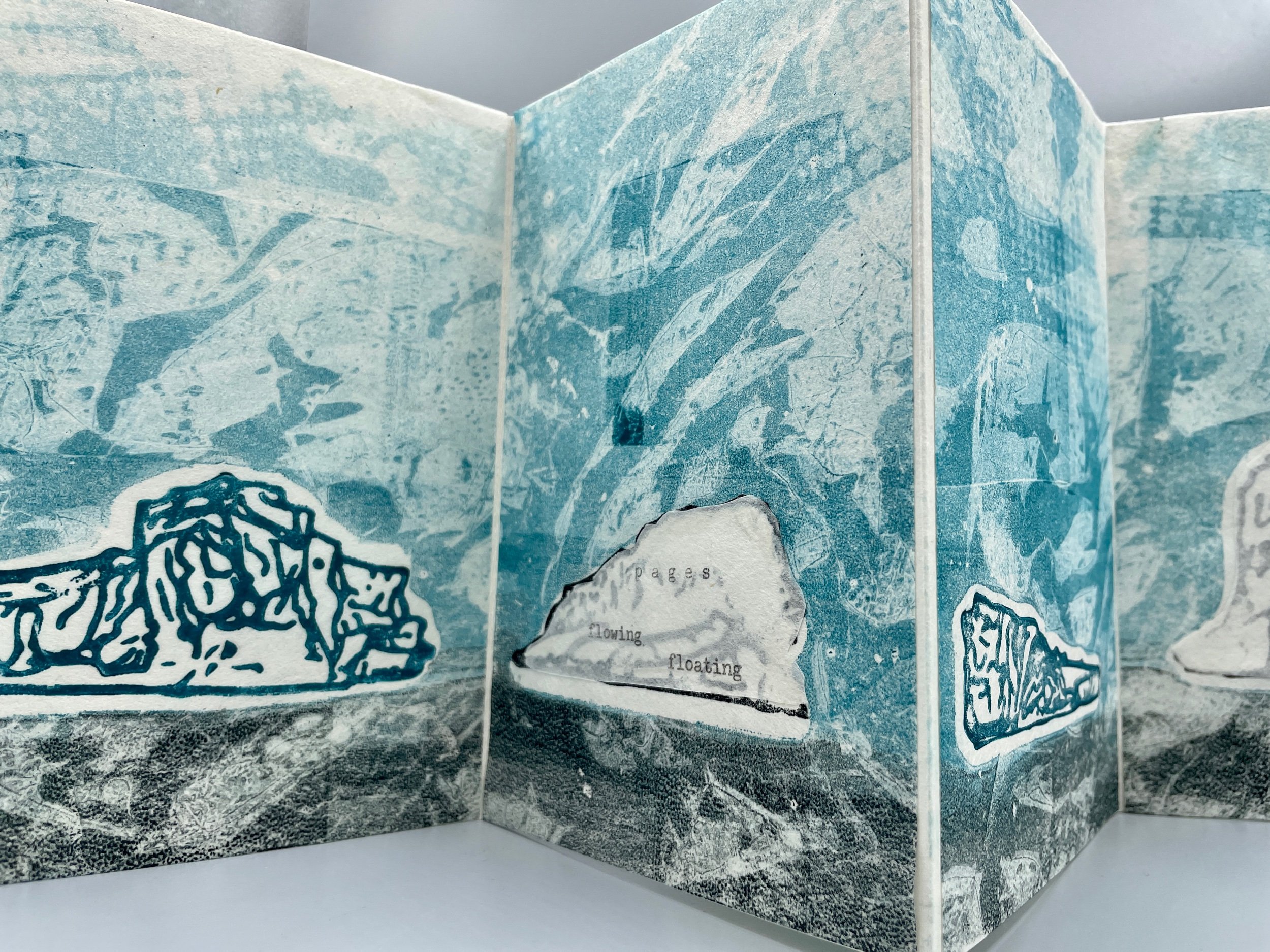
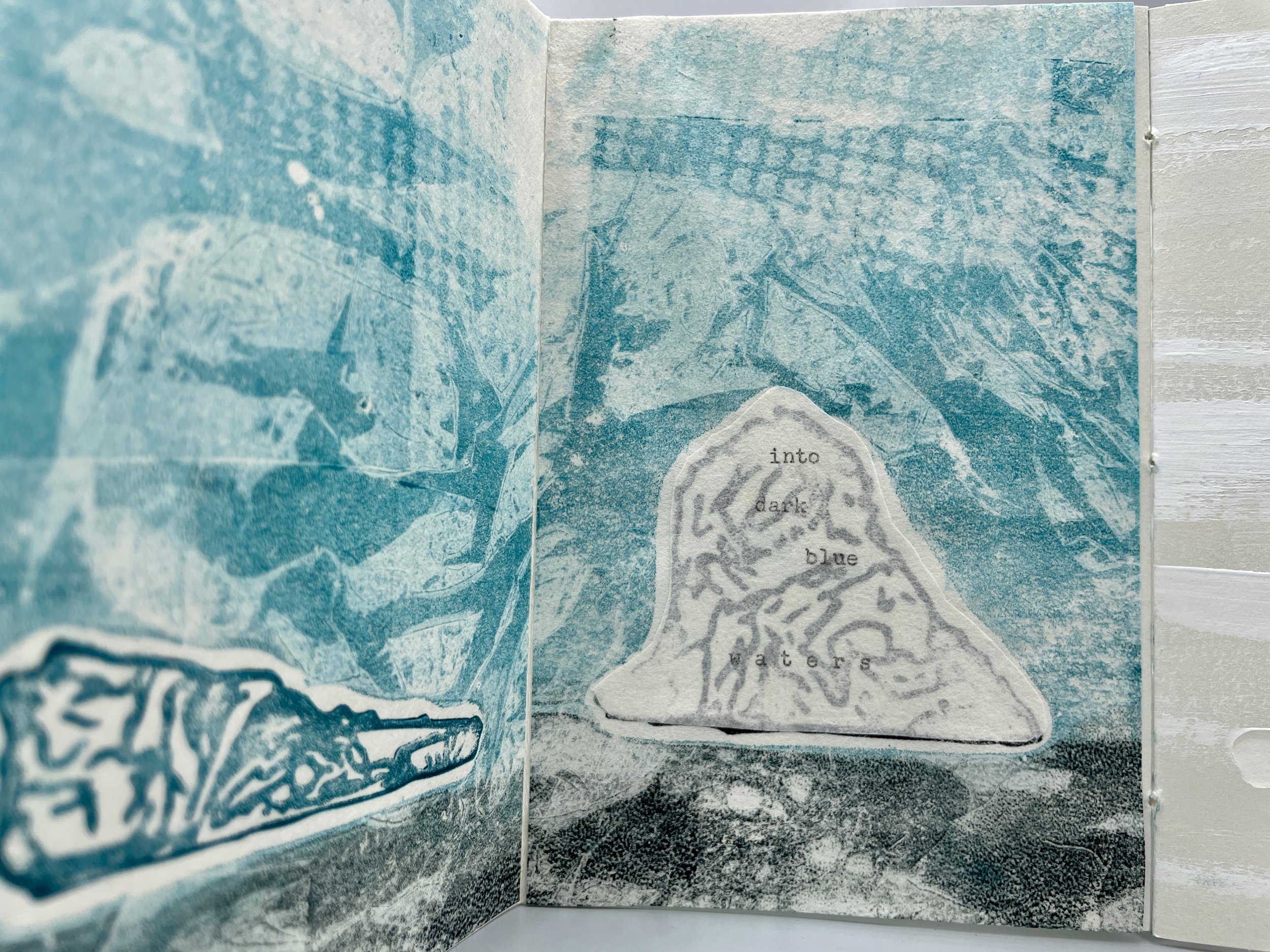

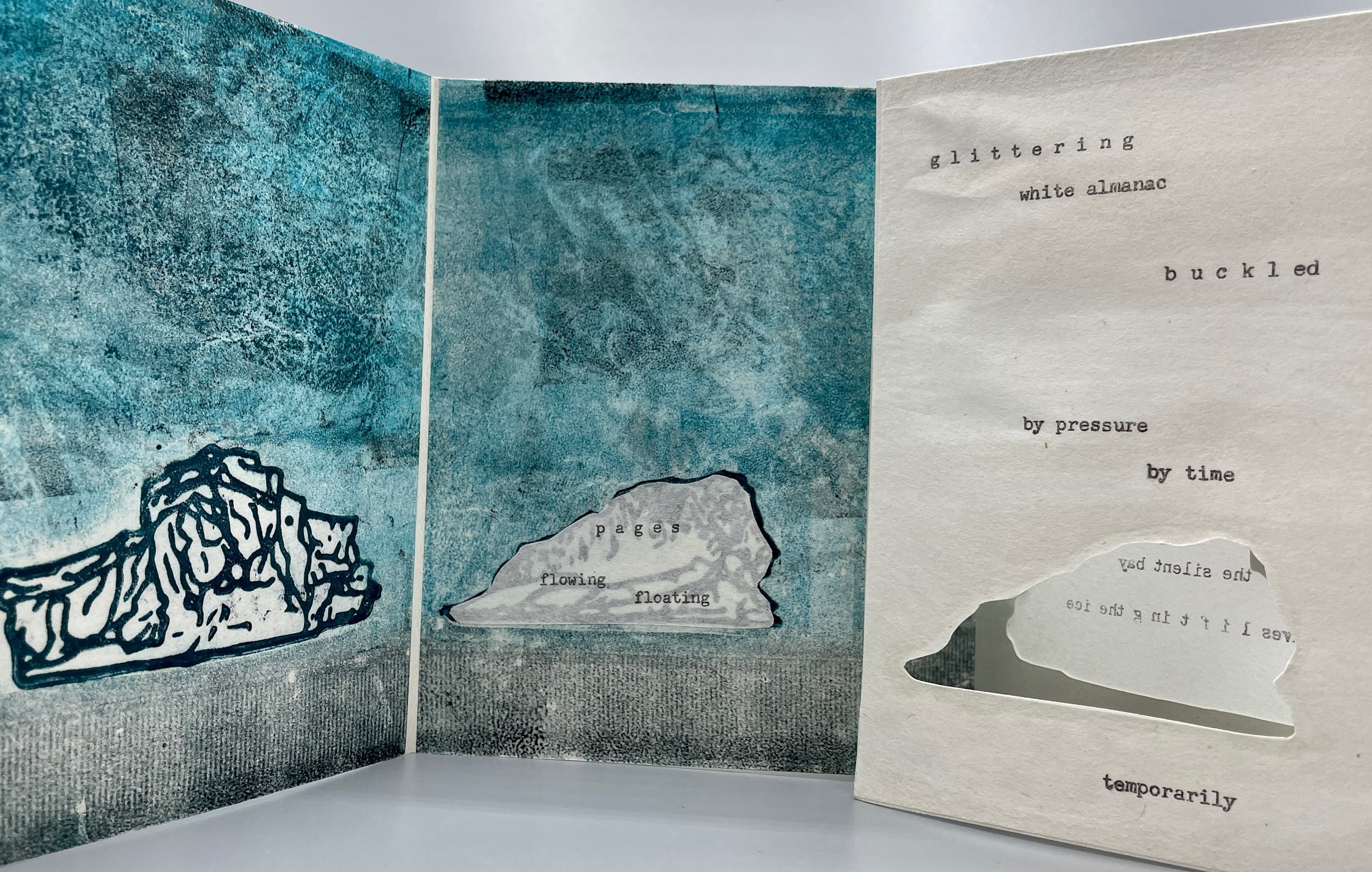
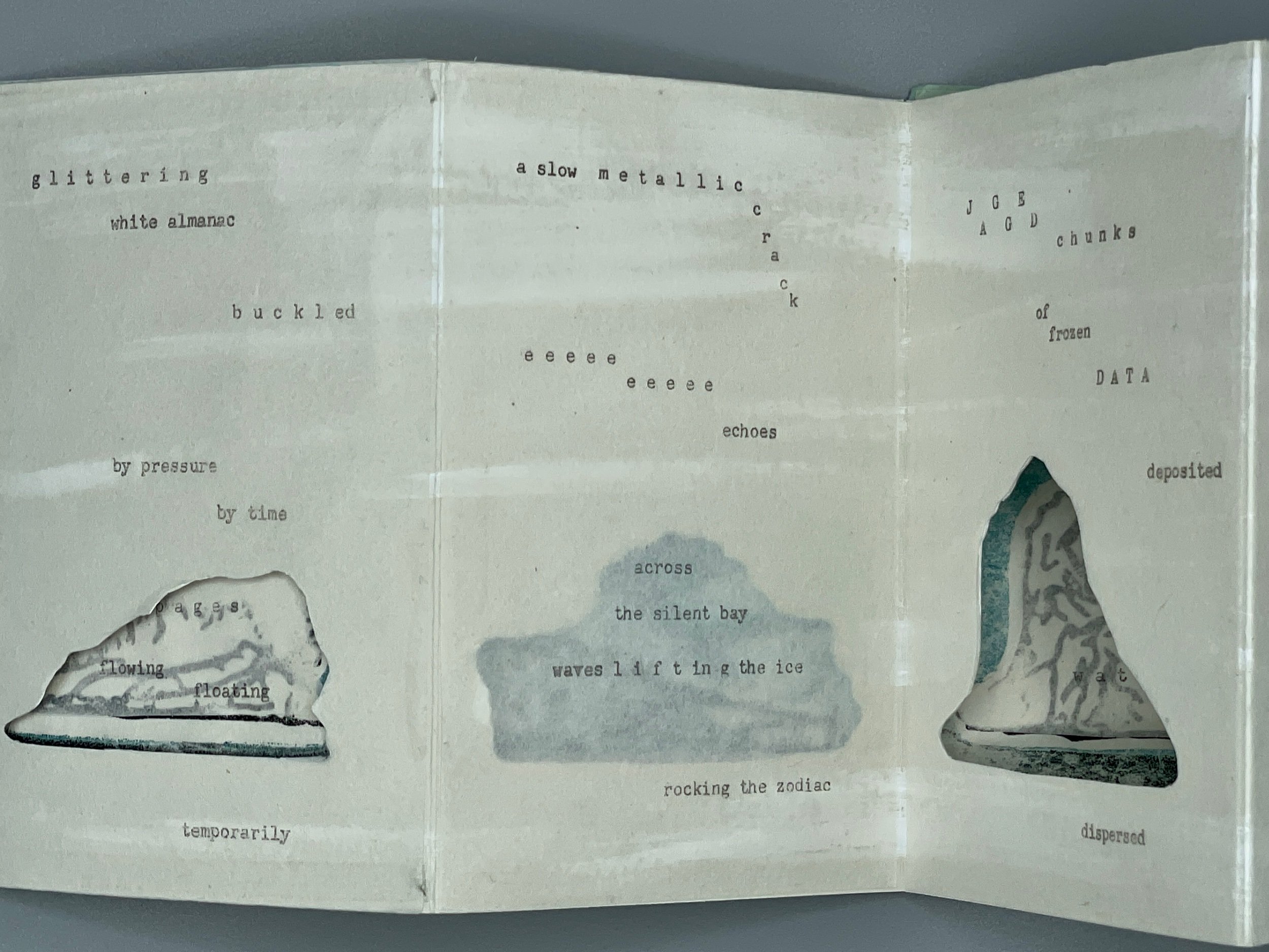
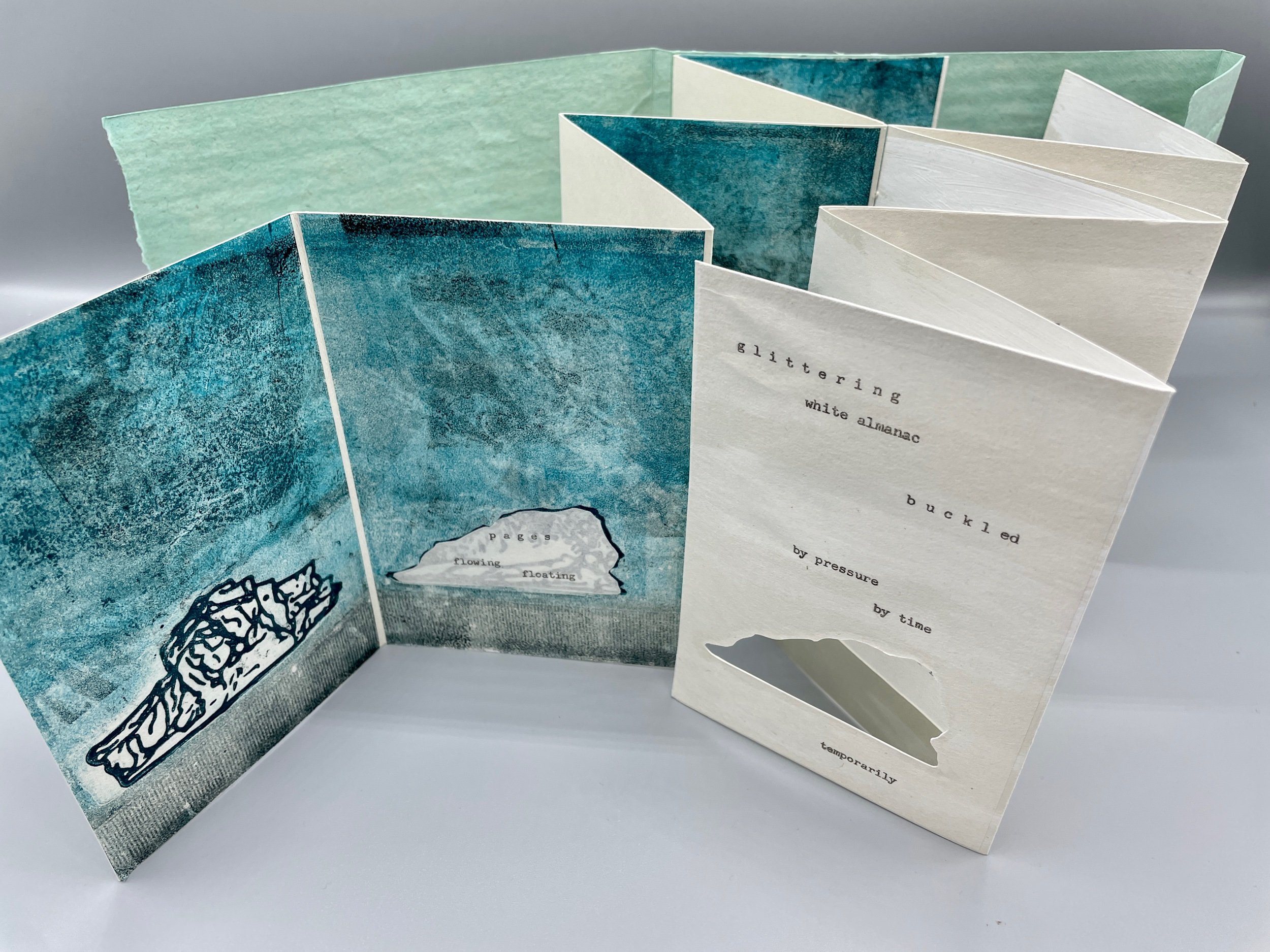
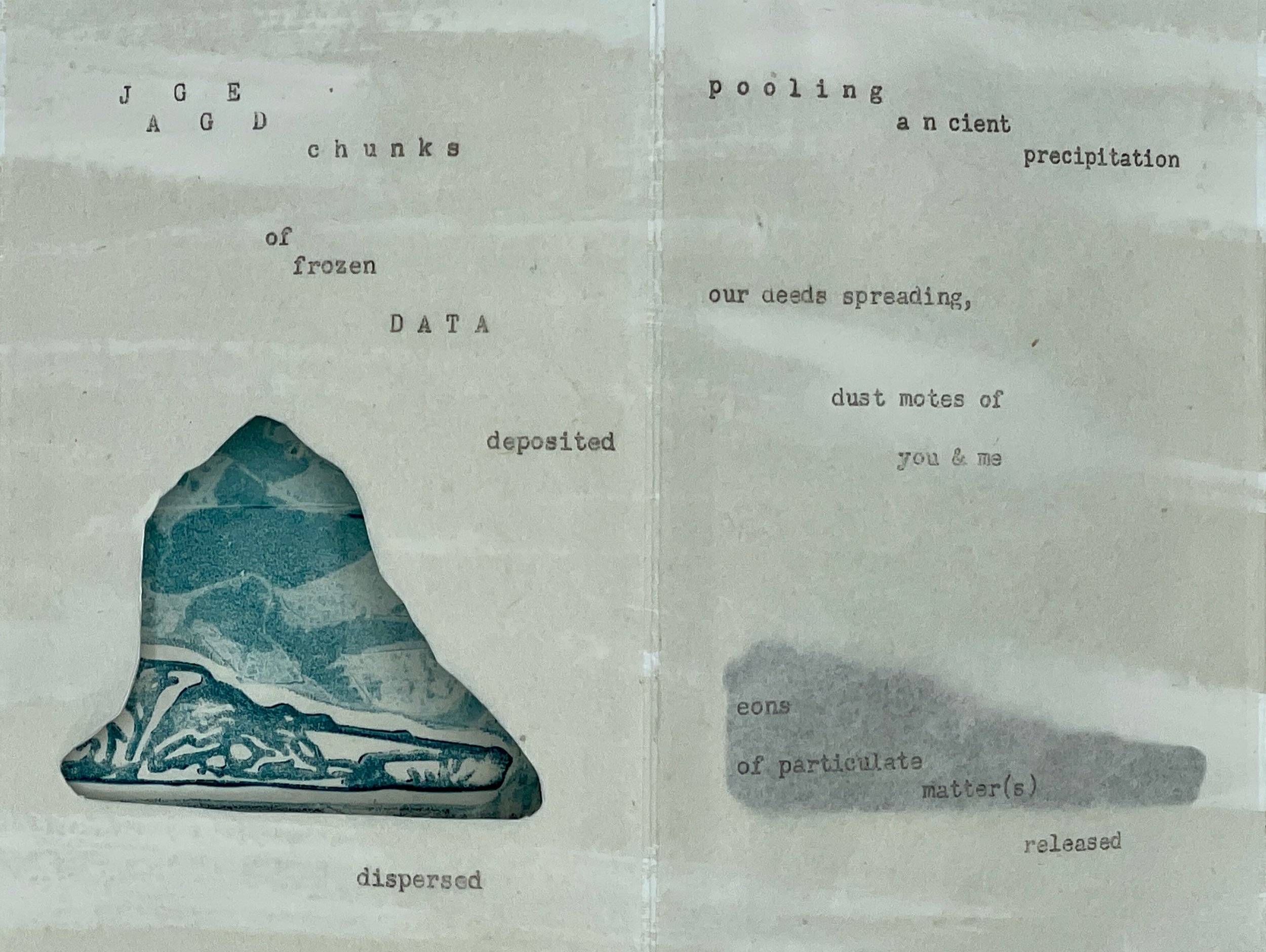
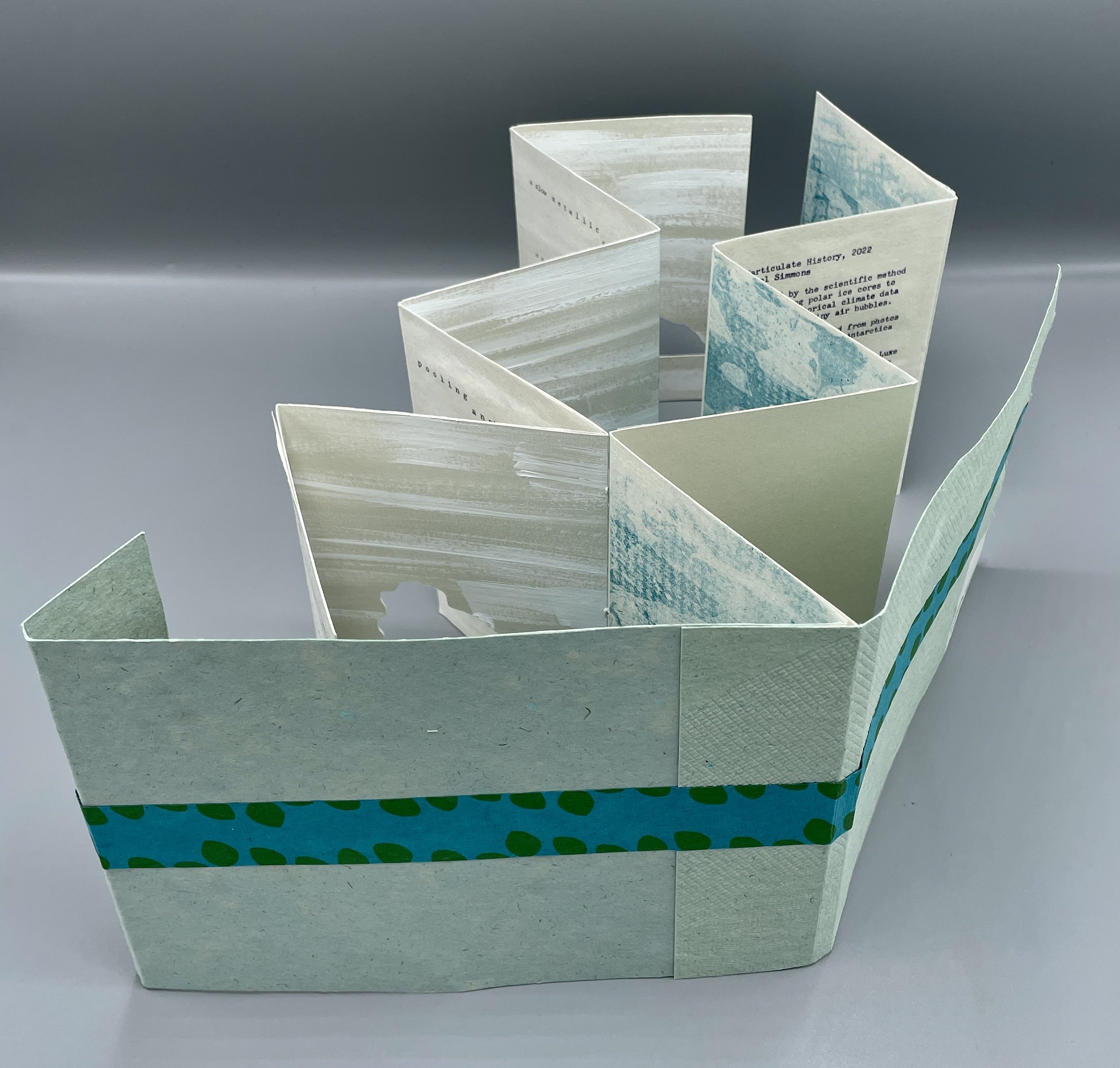

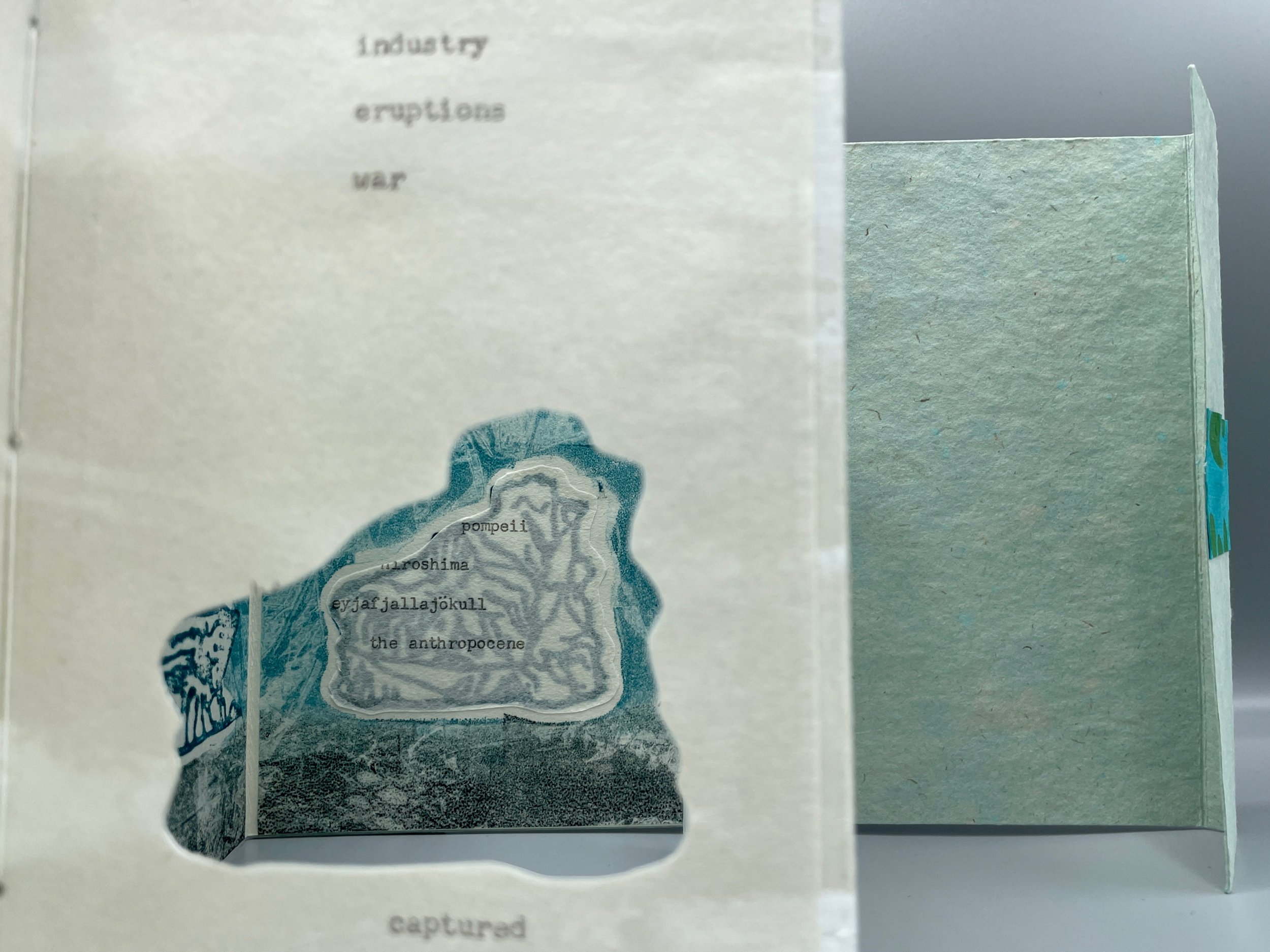
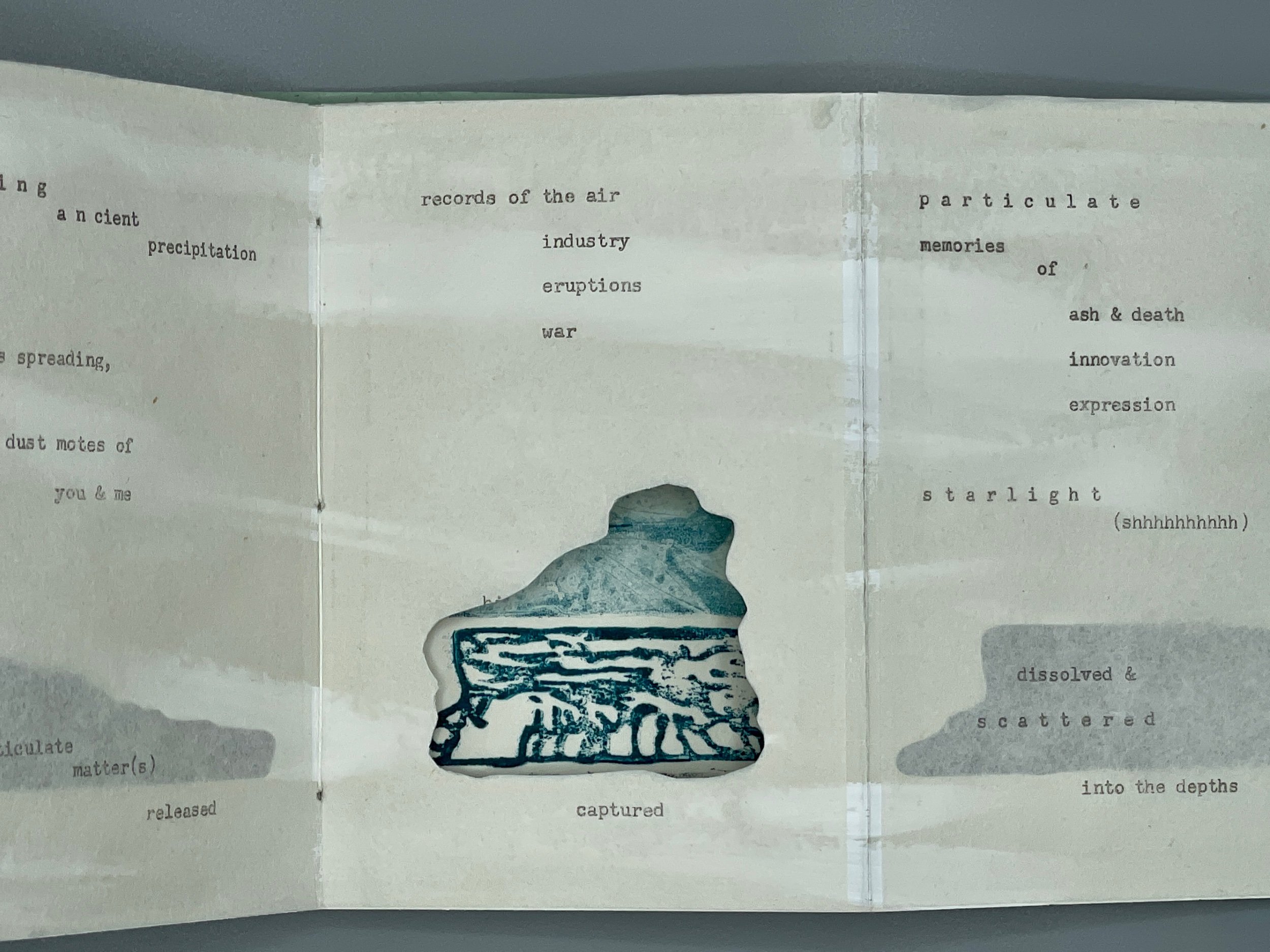
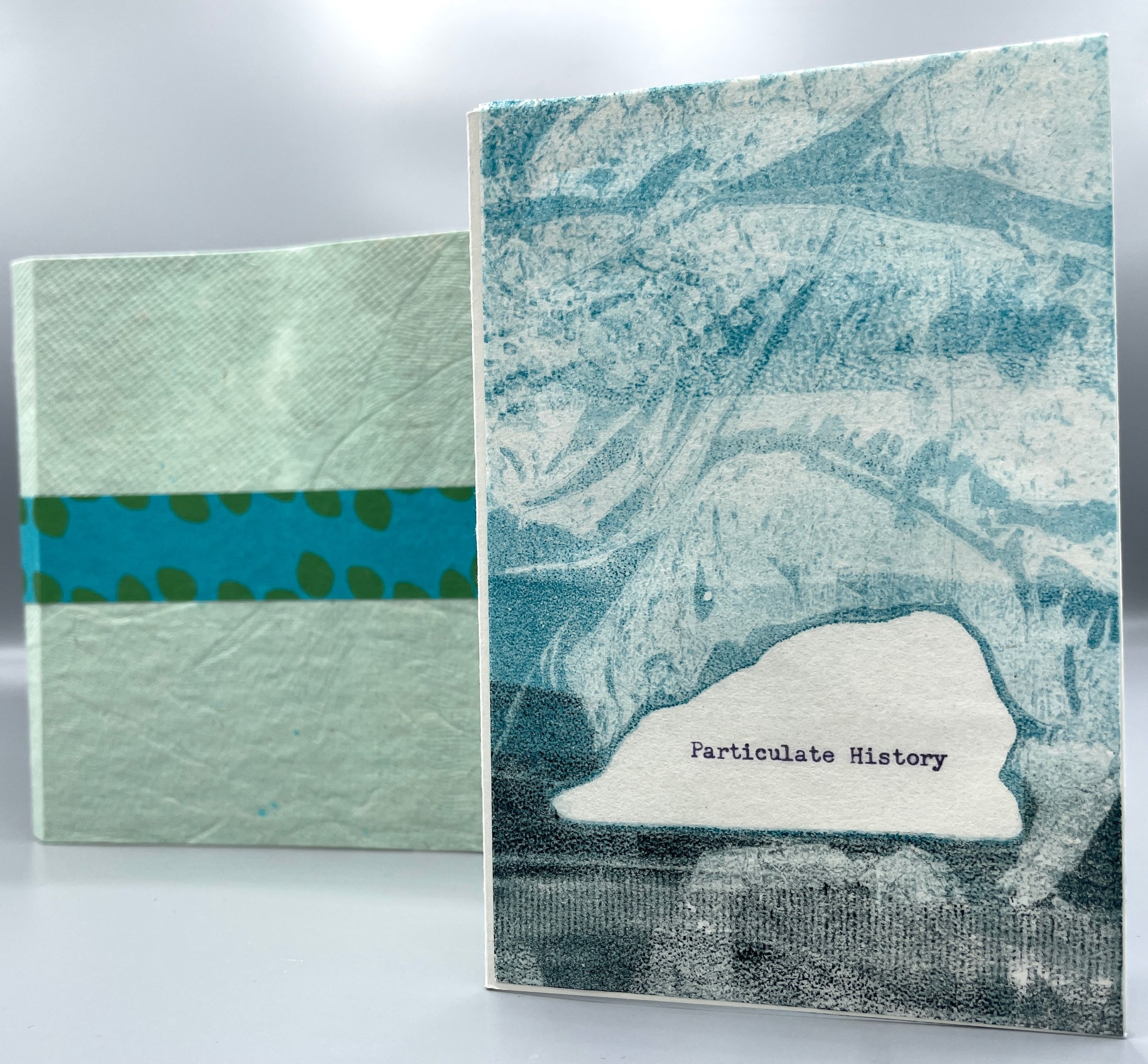
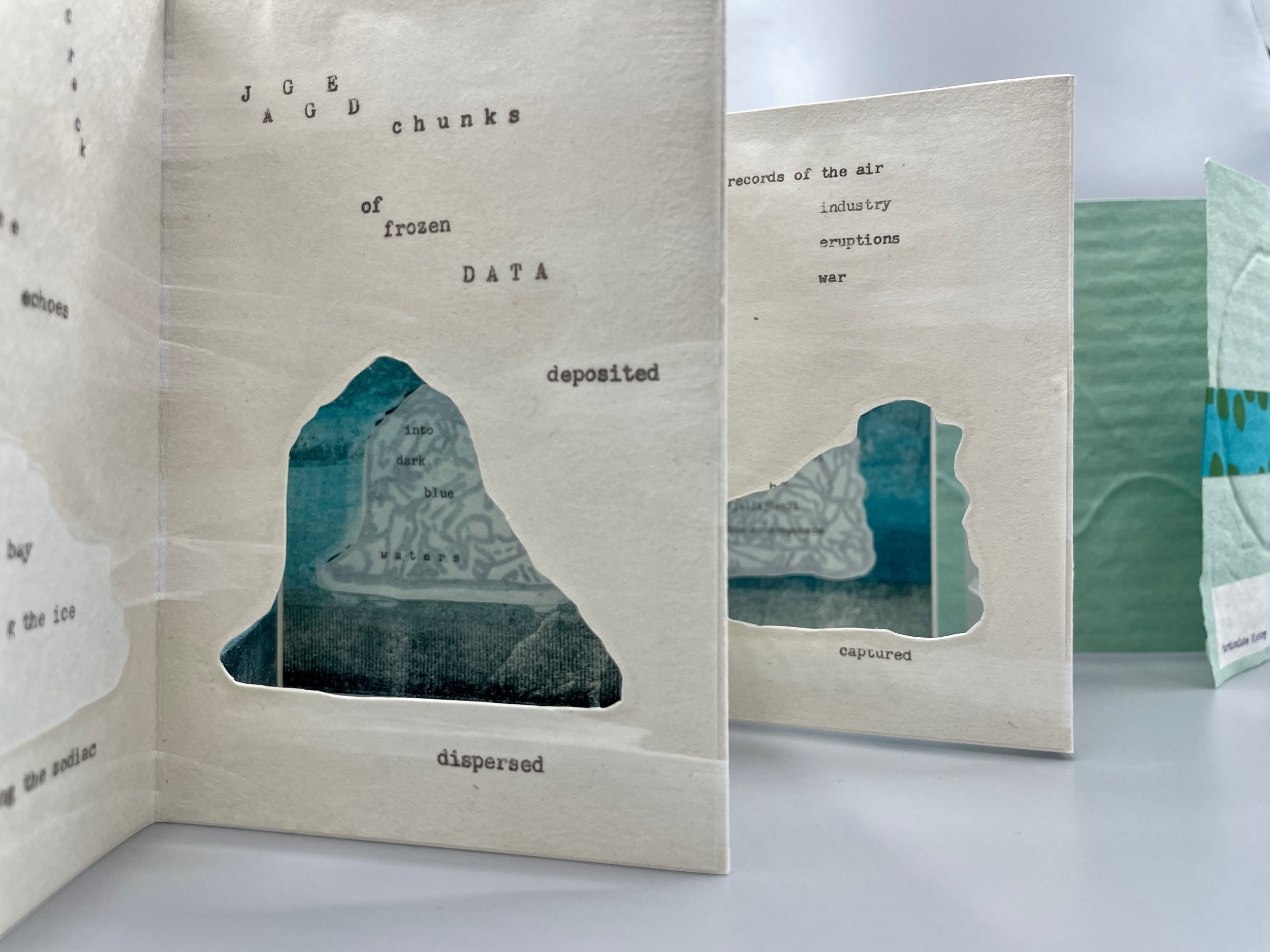
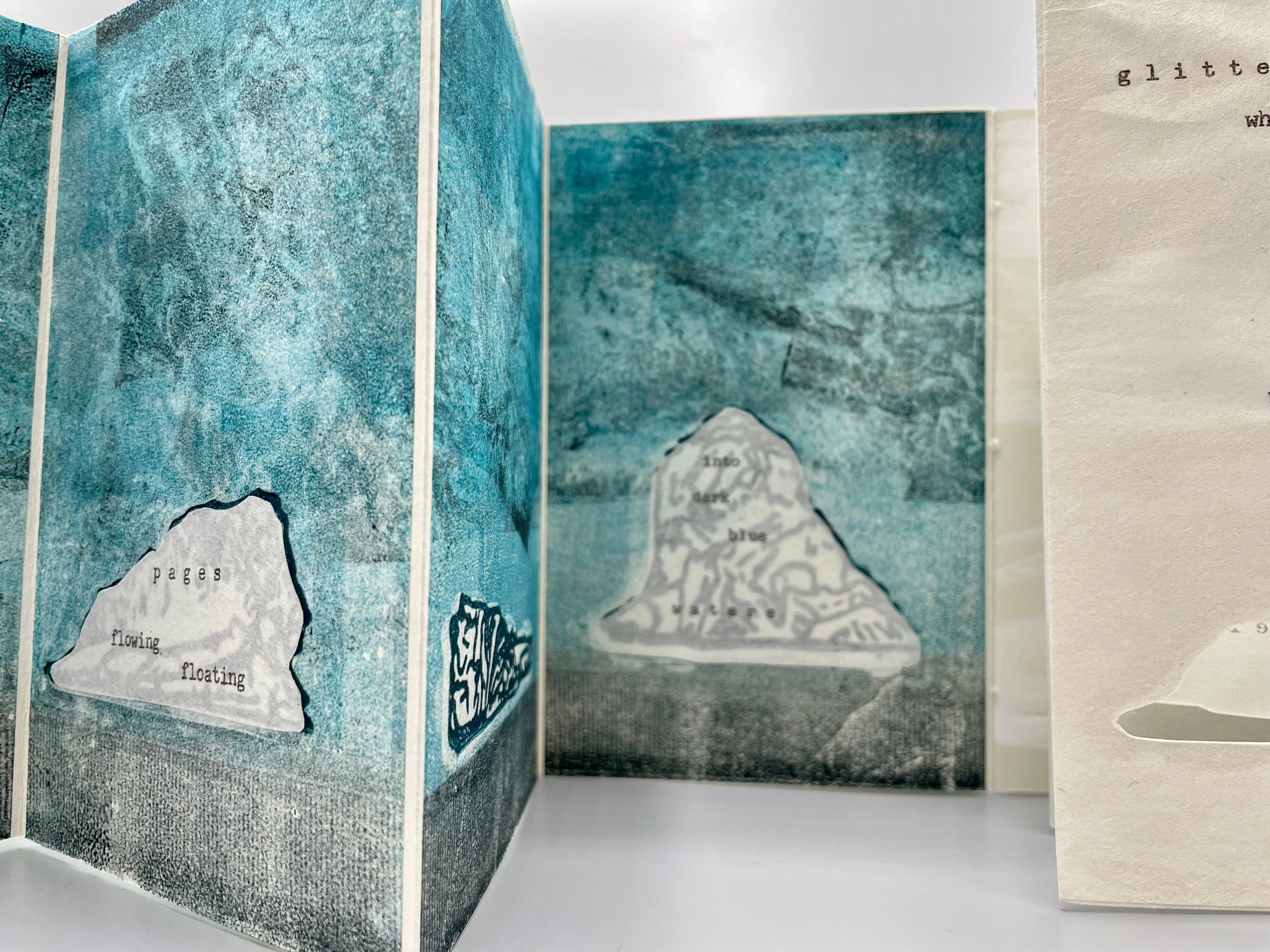
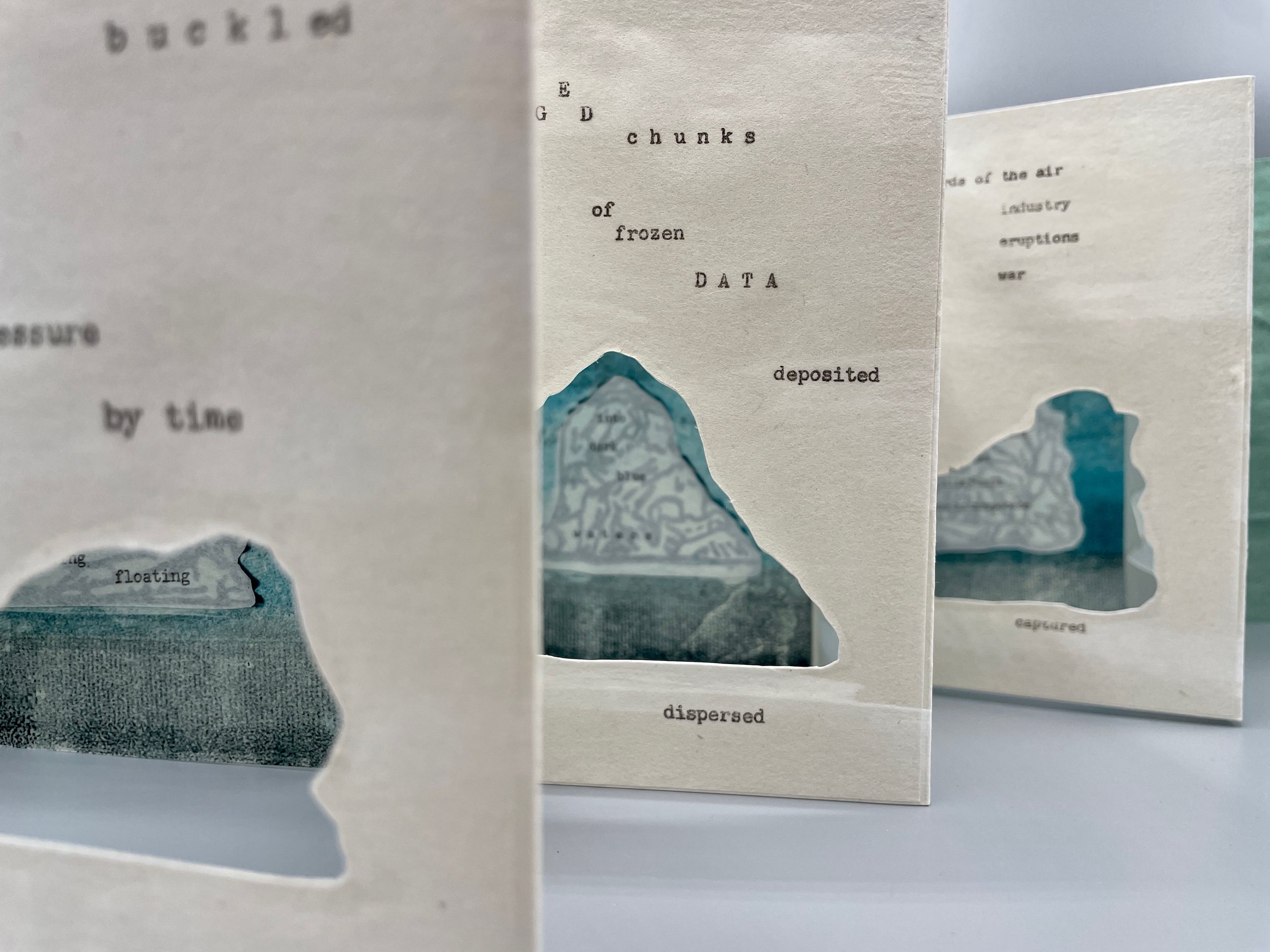
The flexible, tactile structure of the book invites manipulation and presents multiple views based on a reader’s individual exploration. One can peer through cut windows to spy turquoise icebergs or read visual poetry on the mysterious nature of history captured in ice. The work was also influenced by my memories of riding in a zodiac through chunks of ice in the Antarctic Peninsula while hearing glacial ice falling into the bay. The book reads, “Glittering white almanac, buckled by pressure, by time, pages floating/flowing, temporarily. A slow metallic crack echoes across the bay.” The broken textures and aqua color palette evoke the ice, snow, dust and the relentless wind that scours the glaciers. I used found items—plastic carrying bags, ribbon and rubber mesh— to press textures into a Gelli plate to make unique marks in the ink. The six images of the icebergs, also found in my earlier book Tracking B15, came from photographs I took in a glacial lagoon off the Lemaire Channel.
You can see videos of the work in progress on my instagram account @bearwithjetpack
Video for Particulate History

